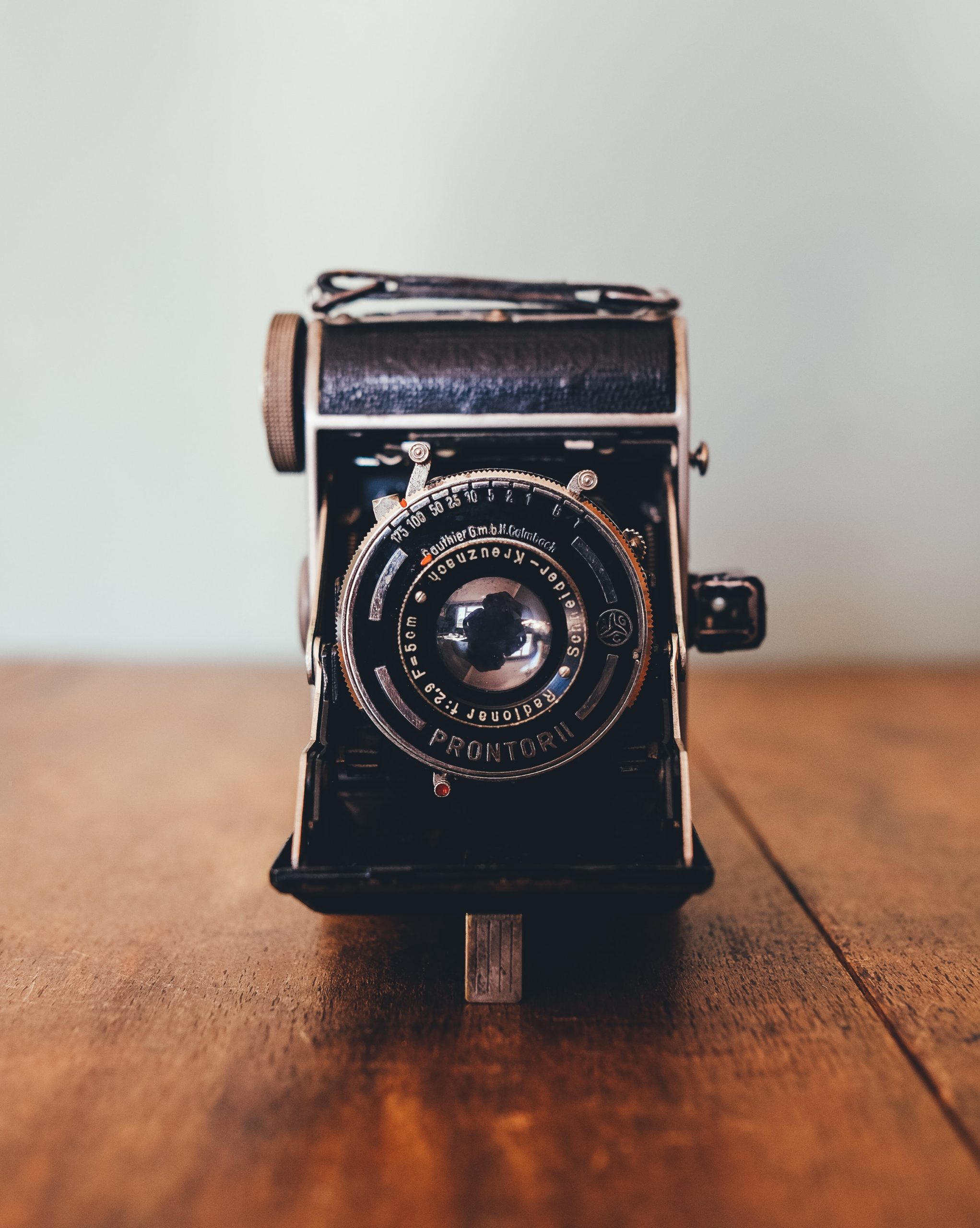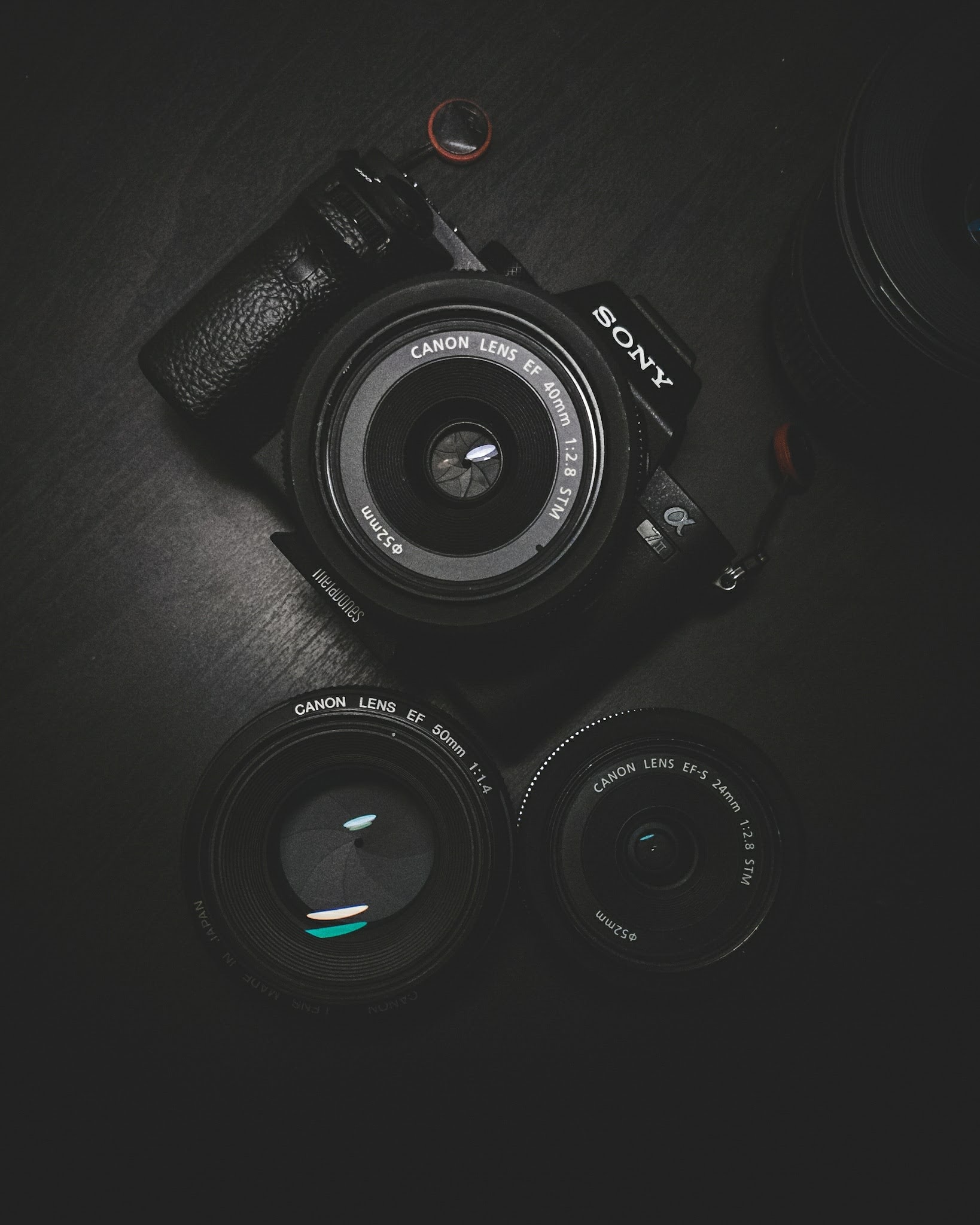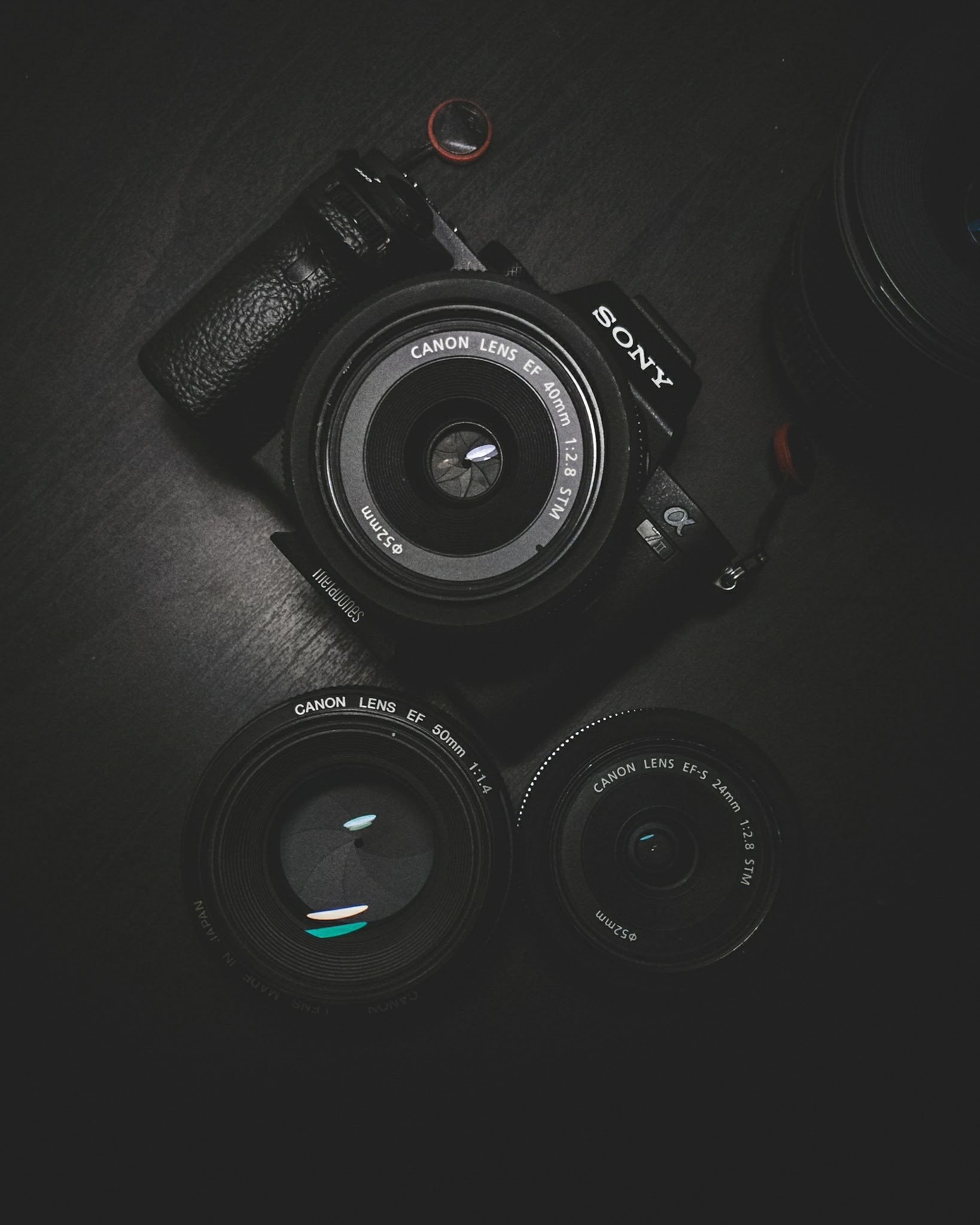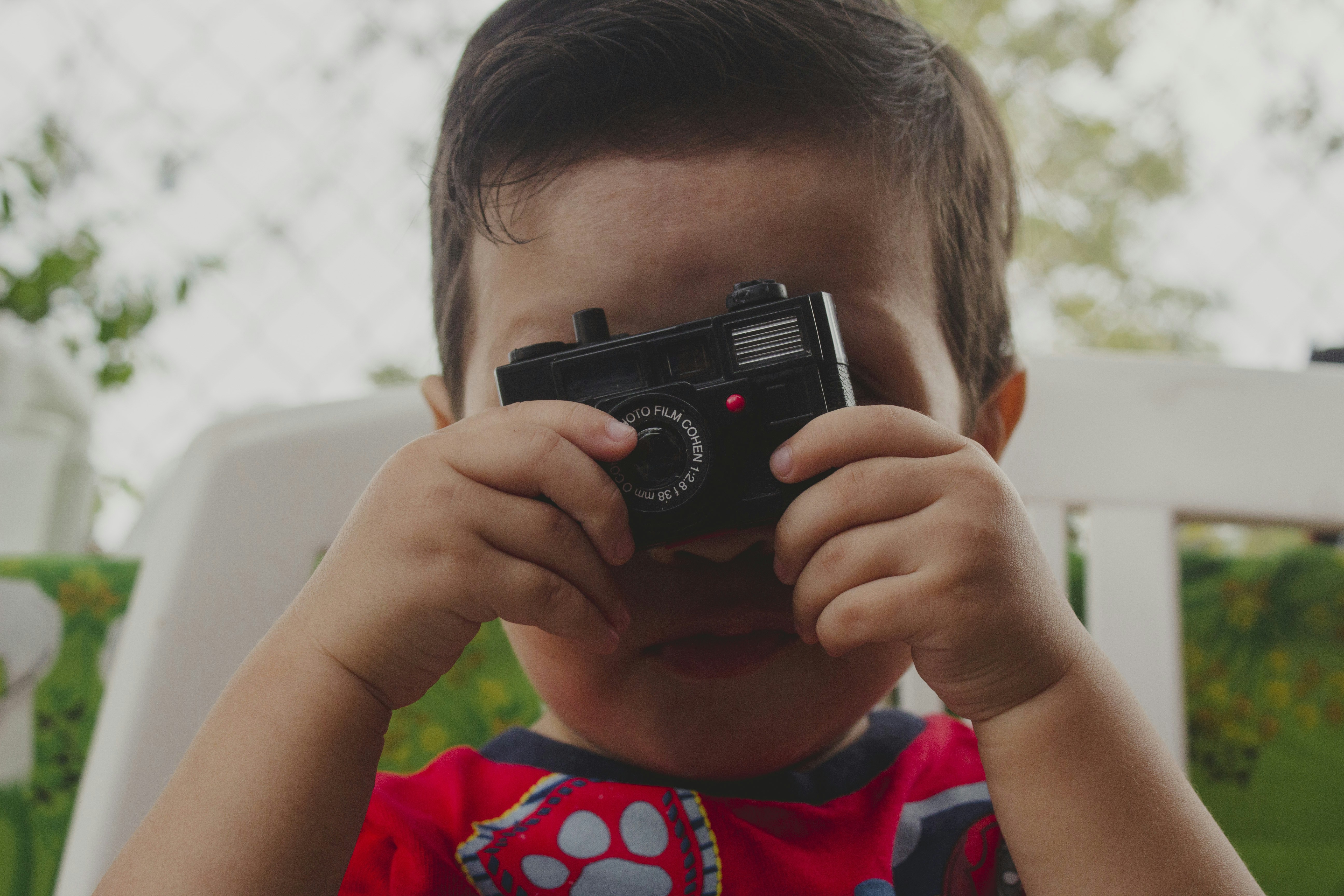If you’re in the market for a new camera, whether you’re a professional photographer or just looking to upgrade your equipment, it can be overwhelming to navigate the wide range of options available. Canon, Nikon, and Sony are three major players in the camera industry, each offering a variety of models with unique features and capabilities. In this article, we will explore and compare the camera features of these three brands, giving you the information you need to make an informed decision and find the perfect camera that suits your needs and preferences. Ready to dive into the world of photography and discover the possibilities? Let’s get started!

This image is property of images.unsplash.com.
Brand Overview
When it comes to camera brands, three names almost always come to mind: Canon, Nikon, and Sony. These brands have established themselves as leaders in the photography industry, providing photographers with top-of-the-line equipment and cutting-edge technology. In this article, we will explore the features and capabilities of cameras from Canon, Nikon, and Sony, allowing you to make an informed decision when choosing the perfect camera for your needs.
Canon
Canon is a renowned brand known for its exceptional image quality and innovative features. Whether you’re a professional photographer or an enthusiast, Canon offers a wide range of cameras to suit your requirements. From the high-end Canon EOS R5 to the versatile Canon EOS Rebel T7i, Canon has cameras for every skill level.
Nikon
Nikon, another well-established brand, is known for its reliable and durable cameras. With a strong focus on image quality and performance, Nikon cameras are widely trusted by professionals around the world. The flagship Nikon D850 and the compact Nikon Z50 are just a couple of examples of Nikon’s impressive camera lineup.
Sony
Sony is a brand that has made a significant impact in the camera market in recent years. With its mirrorless cameras, Sony has pushed the boundaries of technology, offering photographers incredible image quality and advanced features. The Sony Alpha series, including the Sony Alpha a7 III and the Sony Alpha a6400, has gained popularity among professionals and enthusiasts alike.

This image is property of images.unsplash.com.
Image Sensor
The image sensor is one of the key components of a camera, as it captures the light and converts it into digital information. It plays a vital role in determining the image quality, low-light performance, and dynamic range of a camera.
Canon
Canon cameras generally feature CMOS image sensors, which offer excellent image quality and low noise levels. Canon’s latest cameras, such as the Canon EOS R5 and the Canon EOS-1D X Mark III, boast high-resolution sensors that deliver stunning detail and sharpness.
Nikon
Nikon’s cameras also utilize CMOS image sensors, which provide excellent image quality and low noise performance. Nikon’s flagship cameras, such as the Nikon D850 and the Nikon Z7 II, feature high-resolution sensors that deliver superb detail and clarity.
Sony
Sony is known for its advanced stacked CMOS image sensors, which offer exceptional image quality and low-light performance. Sony’s Alpha series cameras, like the Sony Alpha a7R IV and the Sony Alpha a9 II, feature high-resolution sensors with advanced technologies that enhance image quality and dynamic range.
Resolution
Resolution refers to the number of pixels a camera’s sensor can capture, and it determines the level of detail in an image. Higher resolution cameras produce images with more detail, which can be beneficial for large prints or cropping.
Canon
Canon offers a range of cameras with varying resolutions to cater to different needs. The Canon EOS R5 and the Canon EOS 5D Mark IV, for example, feature high-resolution sensors with 45 and 30 megapixels respectively, allowing for incredibly detailed images.
Nikon
Nikon cameras also come in a variety of resolutions, catering to different photography requirements. The Nikon D850 boasts a 45.7-megapixel sensor, while the Nikon D5600 offers a more modest 24.2-megapixel sensor. Both cameras provide excellent image quality and detail.
Sony
Sony’s cameras often have high-resolution sensors, perfect for capturing fine details. The Sony Alpha a7R IV, for instance, features a remarkable 61-megapixel sensor, delivering incredibly detailed images. The Sony Alpha a6600, on the other hand, offers a more modest 24.2-megapixel sensor, suitable for a wide range of photography needs.
This image is property of images.unsplash.com.
ISO Range
The ISO range of a camera determines its sensitivity to light. A wider ISO range allows for shooting in low-light conditions without sacrificing image quality or introducing excessive noise.
Canon
Canon cameras typically have a wide ISO range, enabling photographers to capture well-exposed images in various lighting situations. The Canon EOS 5D Mark IV, for example, has an ISO range of 100-32000, expandable up to 50-102400, ensuring excellent low-light performance and minimal noise.
Nikon
Nikon’s cameras also offer a wide ISO range, allowing for shooting in challenging lighting conditions. The Nikon D850, with an ISO range of 64-25600, expandable to 32-102400, ensures exceptional low-light performance and reduced noise.
Sony
Sony cameras excel in low-light photography, thanks to their impressive ISO capabilities. The Sony Alpha a7S III, for instance, has an astonishing ISO range of 80-102400, expandable to 40-409600. This wide range enables photographers to capture stunning images even in extremely dim lighting conditions.
Autofocus System
The autofocus system of a camera is crucial for capturing fast-moving subjects accurately and quickly. An advanced autofocus system helps ensure sharp and in-focus images, even in challenging shooting situations.
Canon
Canon cameras are known for their reliable and precise autofocus systems. The Canon EOS-1D X Mark III, for example, features an advanced Dual Pixel CMOS AF system with 191 autofocus points, providing excellent subject tracking and focus accuracy.
Nikon
Nikon cameras also offer impressive autofocus capabilities, allowing photographers to track and capture subjects with ease. The Nikon D500, with its Multi-CAM 20K autofocus system, offers 153 autofocus points for precise subject tracking and quick focus acquisition.
Sony
Sony’s autofocus systems are highly regarded in the industry, as they incorporate advanced technologies for exceptional subject tracking and focus performance. The Sony Alpha a6400, for instance, boasts a high-density tracking autofocus system with 425 phase-detection autofocus points, ensuring accurate and fast focus even on moving subjects.

Frames per Second (FPS)
The frames per second (FPS) measure how many photos a camera can capture in a second. A higher FPS allows photographers to capture fast action and fleeting moments.
Canon
Canon cameras often offer impressive continuous shooting speeds, making them suitable for sports and wildlife photography. The Canon EOS-1D X Mark III, for example, can shoot at up to 20 FPS with full autofocus tracking, ensuring you never miss a moment.
Nikon
Nikon cameras also excel in continuous shooting, providing photographers with high-speed burst rates. The Nikon D780, for instance, can shoot up to 7 FPS, while the Nikon D500 offers an impressive 10 FPS, perfect for capturing action-packed scenes.
Sony
Sony’s cameras, particularly their mirrorless offerings, are known for their exceptional continuous shooting speeds. The Sony Alpha a9 II, for example, can shoot an astounding 20 FPS with full autofocus tracking, ensuring you capture every important moment.
Video Recording
In addition to still photography, many cameras now offer high-quality video recording capabilities. Cameras with advanced video features are popular among content creators and videographers.
Canon
Canon cameras are highly regarded for their video recording capabilities, offering a range of resolutions and frame rates. The Canon EOS R5, for example, can record 8K video, while the Canon EOS 90D offers 4K video recording, both at high quality.
Nikon
Nikon cameras also provide excellent video recording capabilities, catering to the needs of videographers. The Nikon Z6 II, for instance, can record 4K UHD video at up to 60 FPS, delivering impressive video quality.
Sony
Sony is a leader in mirrorless camera technology, and their cameras excel in video recording. The Sony Alpha a7 III, for example, can shoot 4K video with full-pixel readout and no pixel binning, resulting in sharp and detailed footage.

Lens Compatibility
Lens compatibility is an important factor to consider when choosing a camera, as it determines the range of lenses you can use with your camera. A wide range of compatible lenses provides photographers with more options for various shooting scenarios.
Canon
Canon cameras use the Canon EF and EF-S lens mounts, providing a vast selection of lenses to choose from. Canon’s extensive lineup includes wide-angle lenses, telephoto lenses, macro lenses, and more, giving photographers the flexibility to capture any subject with ease.
Nikon
Nikon cameras use the Nikon F lens mount, which is compatible with a wide range of lenses. Whether you need a versatile zoom lens or a fast prime lens, Nikon has you covered. Nikon also offers a line of high-quality NIKKOR lenses renowned for their superb optics.
Sony
Sony cameras, especially their mirrorless models, have a versatile lens mount – the Sony E-mount. This mount is compatible with a wide range of lenses, including Sony’s own line of high-quality G Master lenses. Additionally, with the use of lens adapters, Sony cameras can also be used with lenses from other manufacturers.
Image Stabilization
Image stabilization is a feature that helps reduce camera shake, resulting in sharper images, especially when shooting handheld or in low-light conditions. It compensates for any unwanted movement, ensuring your photos are clear and blur-free.
Canon
Canon cameras employ various image stabilization technologies to help photographers capture sharp images in any situation. Some Canon cameras, such as the Canon EOS R5, feature in-body image stabilization (IBIS), while others offer lens-based image stabilization (IS) in select lenses.
Nikon
Nikon cameras also incorporate image stabilization technology to minimize camera shake and deliver sharp images. Nikon’s VR (Vibration Reduction) system is often found in their lenses, providing stabilization for handheld shooting. Additionally, some Nikon cameras, like the Nikon Z6 II, feature in-body image stabilization.
Sony
Sony is known for its excellent image stabilization technology. Their cameras often feature in-body image stabilization (IBIS), allowing photographers to enjoy the benefits of stabilization regardless of the lens used. Sony’s IBIS systems can compensate for various degrees of camera shake, resulting in sharp and stable images.
Connectivity
In today’s interconnected world, connectivity is an essential feature for cameras. Being able to transfer images wirelessly, control the camera remotely, or share photos directly to social media platforms enhances the overall photography experience.
Canon
Canon cameras offer a range of connectivity options to streamline the image transfer process. Wi-Fi and Bluetooth connectivity are common features on Canon cameras, enabling photographers to transfer photos wirelessly to their smartphones or computers. Some Canon cameras even offer NFC (Near Field Communication) for quick pairing with compatible devices.
Nikon
Nikon cameras also come with built-in connectivity features to facilitate easy image sharing and remote control. Nikon’s SnapBridge technology allows for seamless wireless image transfer between the camera and a smartphone or tablet. Additionally, Wi-Fi and Bluetooth connectivity are available on select Nikon models.
Sony
Sony cameras are known for their advanced connectivity options. With built-in Wi-Fi and NFC, Sony cameras make it easy to transfer images to compatible devices. Additionally, many Sony cameras offer wireless remote control capabilities, allowing photographers to control the camera settings and trigger the shutter remotely.
In conclusion, Canon, Nikon, and Sony are all reputable and trust-worthy camera brands, offering a wide range of cameras with impressive features and capabilities. When selecting a camera, it is essential to consider factors such as image sensor quality, resolution, ISO range, autofocus performance, continuous shooting speed, video recording capabilities, lens compatibility, image stabilization, and connectivity options. By understanding the strengths and offerings of each brand, you can choose the camera that best suits your photographic needs and preferences. Happy shooting!

